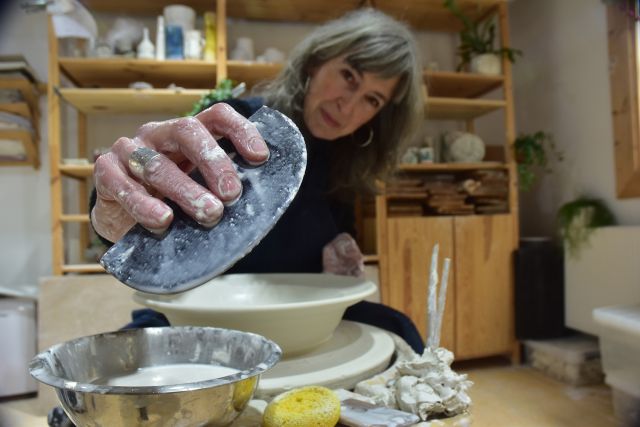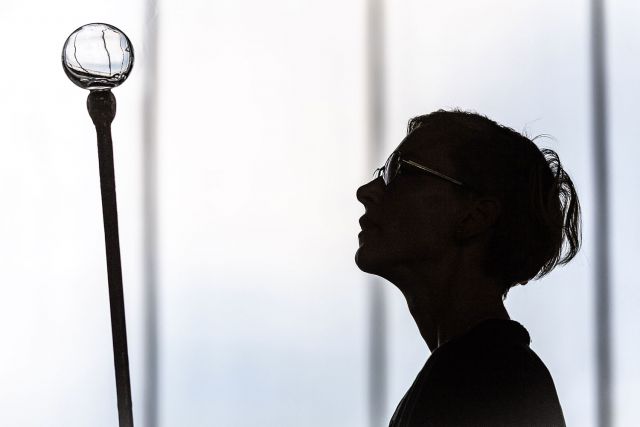The Cube vessel was slab-built and finished with reduction firing. The multi-layered effect was obtained with the use of white kaolin slip associated with thin layers of transparent glaze. By balancing the proportion of the body with the rhythmic pattern of vertical lines, Christine created an elegant stoneware vessel.
Width 25.5 cm
Height 43.7 cm
Depth 25.5 cm
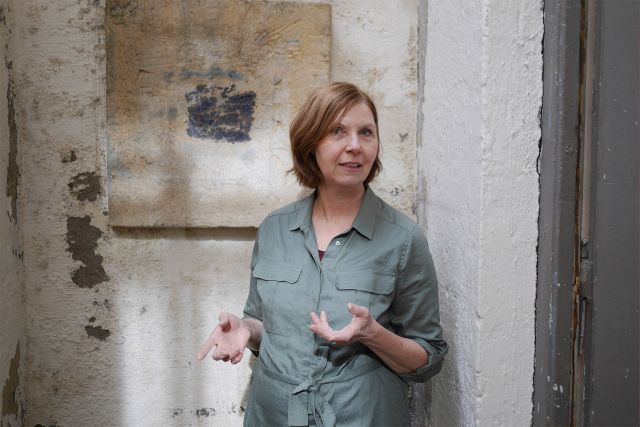
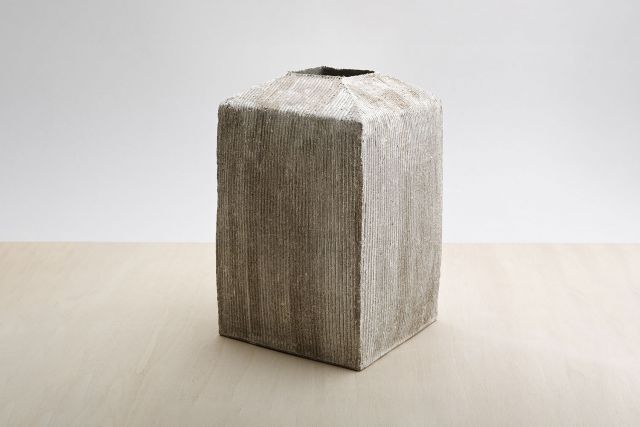
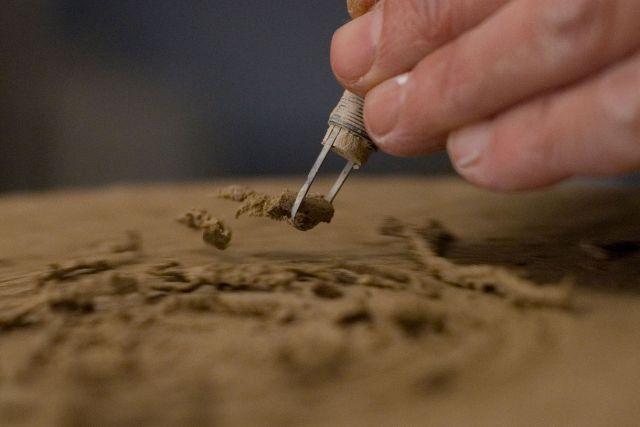
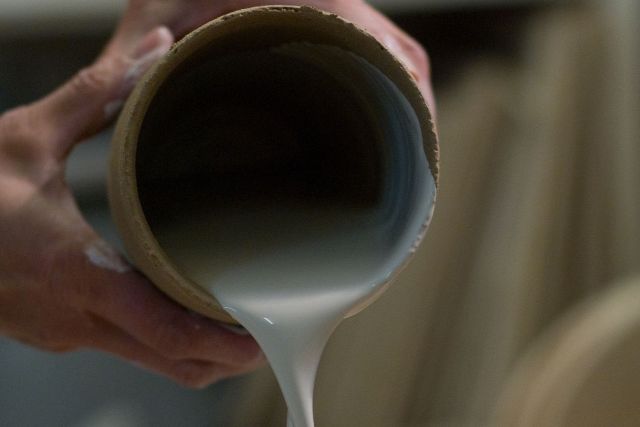
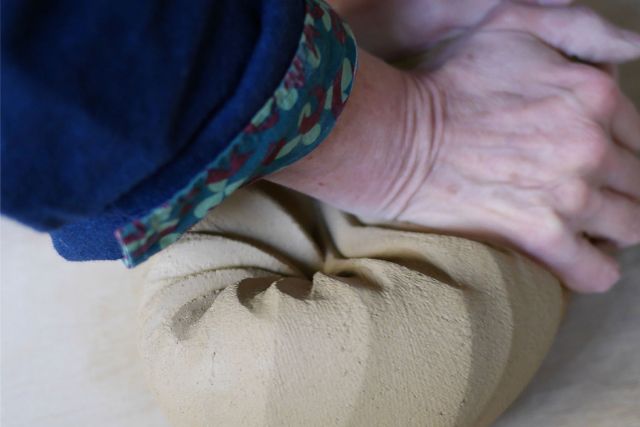
Christine Wagner
- Ceramicist
- Munich, Germany
- Master Artisan
- Recommended by Oliver Jahn
By appointment only
+49 89772457
A unique vision of ceramics
- • Christine trained under a master ceramicist in Japan
- • Her work touches on different times and cultures
- • She creates an array of contemporary ceramic forms
Shortly before her A-levels, Christine Wagner went to England in order to brush up on her English where she stayed with an elderly lady “in her overgrown garden, within a small wooden hut there was a potter's wheel, where I turned my first cup and bowl,” she recalls . A visit to a ceramics exhibition in Japan after high school inspired her to delve into ceramics “the vessels were completely new and surprising to me,” she explains. Christine decided to stay in Japan and she started an apprenticeship with Master Yasoji Sasaki. Three years later, Christine Wagner returned to Germany and finished her apprenticeship in Landshut and subsequent studies in ceramics at the University of Arts in Linz, Austria. Since then she has worked on her inimitable expression that does not reproduce but embraces a traditional aesthetic in a contemporary way.
Read the full interviewWorks
Photo: © Edith und Otward Buchner

Photo: © Edith und Otward Buchner
This stoneware vessel is part of an ongoing investigation into modern shapes and formal austerity. Through the rhythmic stamp pattern and the hand-painted grid, achieved with the use of white kaolin clay and transparent glaze, Christine created a textured surface matched with the straight cut edges of the vase.
Width 17.8 cm
Height 41 cm
Depth 8.6 cm

Photo: © Oliver Maier
Part of a series of cylindrical vessels developed over several years, these vases were made from red stoneware and wheel-thrown. In the final stage of creation, Christine covered the inside with a thin layer of white kaolin-slip, contrasting with the deep brown of the outer surface, achieved with a mixture of metal oxides.
Diameter 11.3 cm
Height 17.5 cm

Photo: © Oliver Maier
This stoneware vessel is part of a series composed of rectangular vases with straight cut and uneven edges and grid pattern surfaces. The finish was achieved by applying several layers of white kaolin clay and by scrapping back the upper one, leaving white traces in the grooves.
Diameter 11.3 cm
Height 17.5 cm

Photo: © Anton Brandl
Christine drew inspiration from the brutalist movement in architecture to create these rectangular vases. The surfaces were left unrefined, only a thin layer of white slip was applied to emphasise the structures which were then textured using a cord.
Width 24 cm
Height 37 cm
Depth 9 cm
Width 19 cm
Height 22.8 cm
Depth 9.5 cm






